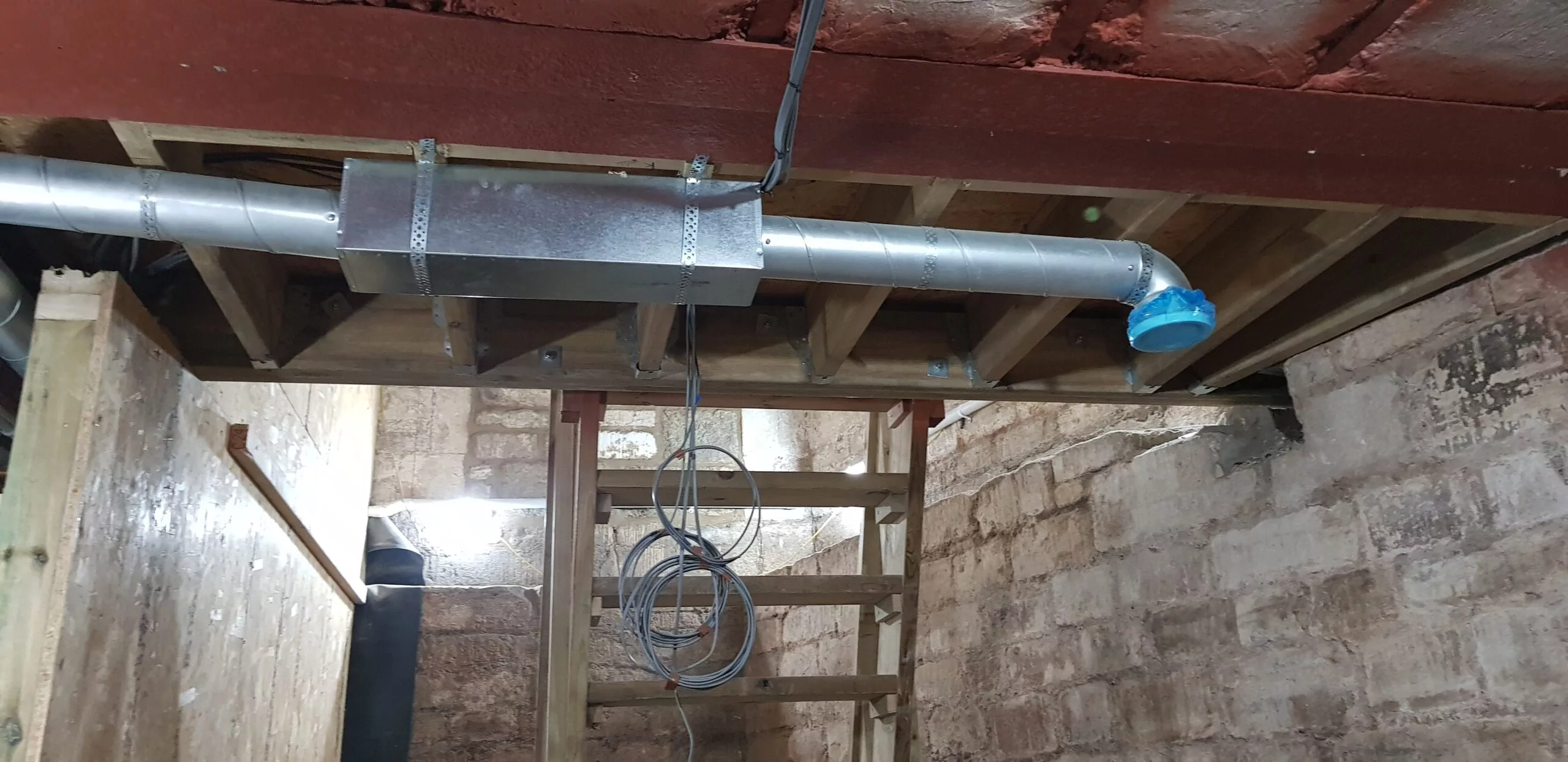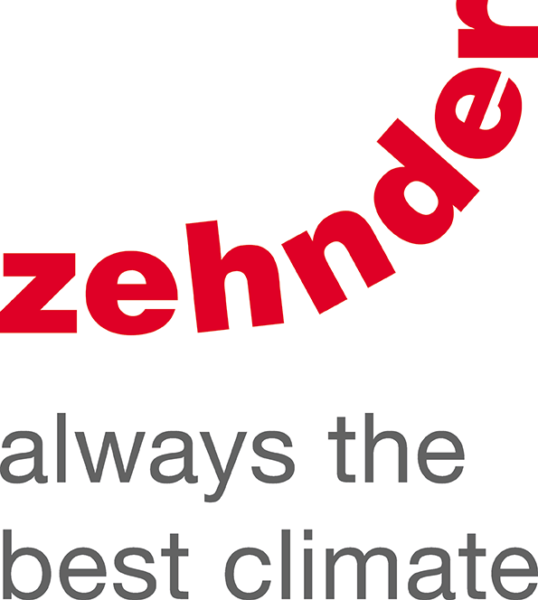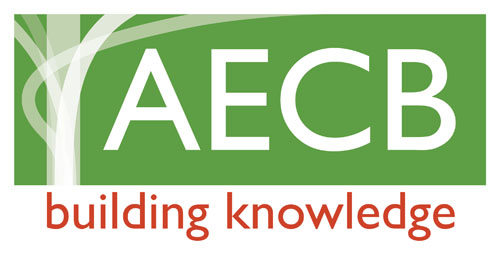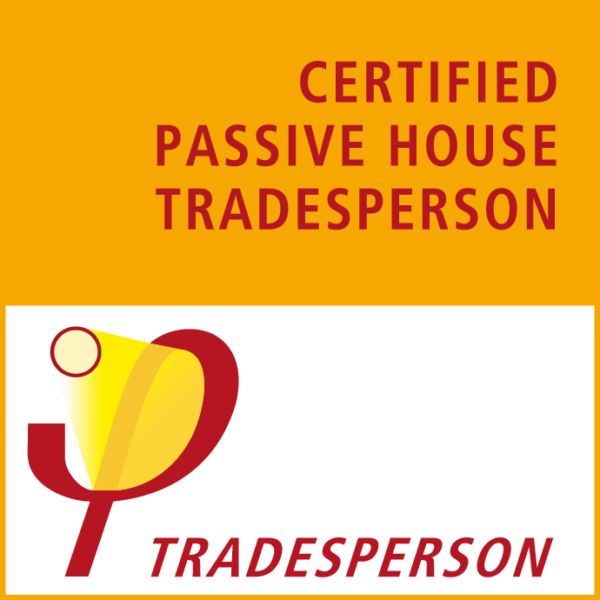-
What does MVHR stand for?
MVHR stands for Mechanical Ventilation with Heat Recovery.
-
What is MVHR?
An MVHR system is a whole house ventilation system with heat recovery. MVHR supplies fresh air to all habitable rooms in a building (e.g. living rooms, dining rooms, bedrooms, studies, etc). It also removes moist stale air from bathrooms, kitchens, toilets and utility rooms, bringing fresh, filtered air into the house (which helps with indoor air quality, unlike other ventilation systems). As opposed to traditional ventilation systems, which ‘dispose of’ heat from the building via vents, an MVHR system can recover up to 96% of the heat from the air in the building and redistributes it to the habitable spaces. This makes it hugely beneficial in terms of reducing energy consumption, heating bills and your carbon footprint.
-
What are the benefits of MVHR?
Modern buildings, particularly passive houses, are increasingly airtight and it’s really important to be able to properly manage the ventilation and moisture in these properties. Below are some of the many benefits of MVHR:
-
- Constant flow of fresh air all year round at almost room temperature.
-
- Pollen and traffic pollution filters – Means low CO2 and pollutant levels = Healthy air
-
- Excellent air quality – Helps with allergies, e.g hayfever and asthma.
-
- Reduces humidity (which helps with mould issues).
-
- Eliminates condensation and mould that can cause cosmetic and structural damage.
-
- Temperature, humidity and CO2 sensors help your MVHR to automatically adjust your indoor environment.
-
- Extremely efficient – Up to 96% of heat from extracted air can be retained and transferred to incoming fresh air.
-
- Requires minimal maintenance and user control – Once installed and calibrated, MVHR units automatically boost when they detect changes in humidity
-
- You can air dry clothing without having to use a tumble dryer!
-
- MVHR systems (in homes which meet specific criteria, usually certified Passive Houses) can provide heating and cooling using MVHR (see Heating and Cooling) instead of air conditioning or central heating. This means you effectively have climate control for the home at a very low running cost. For example, MVHR can be used (in conjunction with an air source heat pump) to heat and cool the property with a Zehnder ComfoPost.
-
-
What is an MVHR system made up of?
There is the MVHR unit itself (usually around the size of a washing machine), comprising the heat recovery/heat exchanger part of the system, the fans and the filters. Coming from the unit you have the extract ducting (which removes all the moist air from the bathrooms, utility rooms, kitchens and other ‘wet spaces’) and the supply ducting (which supplies warm and fresh air to all the living spaces).
-
Could you have MVHR in any kind of house?
The short answer is yes.
-
- MVHR is essential in a Passive House.
-
- It also works well in near-Passive Houses and other modern houses with a good level of airtightness.
-
- MVHR can also be retrofitted into older houses. Since the system needs to accommodate ductwork throughout, this requires proper planning and is usually done as part of a wider renovation.
-
-
Are MVHR systems noisy?
If designed and installed correctly, you shouldn’t notice any noise from your MVHR system.
In our experience, cheaper MVHR units have noisy fan motors and the casing isn’t well built and/or insulated.
Zehnder units are the quietest on the market, followed by Lindab, which is one of the reasons why we recommend these to clients. One basic lower cost brand MVHR unit has the same noise level as eight Zehnder Comfo Air Q units. For Passive Houses there are maximum decibel levels permitted at the extract and supply points in each room. We always specify sound attenuators, which reduce noise further.
-
What’s the difference between a budget MVHR system and the systems you sell (Zehnder, Lindab and Ubbink)?
-
- Passive House approved – All of our systems are approved to Passive House Standard, which means they’ve been through rigorous independent testing by the Passive House Institute, testing to see if what the manufacturers state is realistic in terms of stated energy efficiency levels. As a rule, Passive House certified components are two to three times more efficient than the equivalent commonly used products. When an MVHR unit has ac hieved Passive House certification, you can rest assured that it will perform as designed.
-
- Quiet and long-lasting operation – All MVHR systems move air, but not all of them do it quietly and for the life of the building – which is how long you need ventilation for! There are a lot of what we call ‘plastic fantastic’ systems on offer out there. We know because we get asked all the time to come and fix or replace them! These systems are cheap, but not built to last, so people end up spending way more money in the long run (on fixing or replacing them) than if they’d just invested in a good system in the first place. These systems are noisy because they use cheap fans, they are not properly insulated, and they have been squeezed into inappropriate spaces without thought or proper planning.
-
- Replaceable parts – The MVHR systems we supply have components that can be individually replaced, meaning that they can be easily fixed, and you don’t have to replace the whole unit if something stops working. This is unlike cheaper alternatives, for which you often have to replace the whole machine if an individual part breaks, especially if it has been built into a place where it cannot be taken out again easily.
In summary, the main difference is in:
-
- Functionality
-
- Acoustic performance
-
- Longevity
-
-
Does MVHR run all the time?
Yes, an MVHR system runs 24/7.
-
Why do MVHR systems have different fan speeds?
The MVHR units we sell have three fan speeds and an Away setting.
- It is the Away setting which is used if you no longer live in the property. (It’s important to note that you should never turn off an MVHR system once it has been running as if there is moisture inside the heat exchanger this could cause mould to grow and result in your heat exchanger needing to be replaced).
- This is the setting that is used if you are going away for the weekend or a longer duration of time. It’s mostly important in the winter as, if you are not in the house, you can risk overventilation of the property and losing precise heat energy.
- The majority of the time the MVHR unit will be running on fan speed 2. This is the normal setting which the system will have been designed to run in. When we design your system we will calculate the amount of airflow required by evaluating a number of factors, such as the size of the building, amount of occupants, building regulations requirements and passive house design.
- The fan speed 3 or Boost setting is the maximum fan speed we have designed the system to run in. It will automatically be triggered if there is a humidity spike in the system. Users may wish to use this setting to deal with cooking smells or if they have lots of people in the building and require some extra ventilation.
-
Does MVHR cost a lot to run?
No – running costs are very low. The energy use of a good MVHR system in a typical three-bedroom house tends to be about £40-60 a year.
-
What is the ideal temperature and humidity?
21ºC and between 50 and 60% relative humidity.
-
How much maintenance is required?
Day to day – There isn’t anything you need to do to your system. You might sometimes want to use a specific function (e.g. the Boost mode if you’re cooking and want odours to be extracted quicker), but other than that you shouldn’t need to think about your MVHR system.
At least once a year – Filters need to be changed between 6-12 months. The maintenance of the system is mostly very low key and can be done with your annual spring clean. When we install your system we can show you how to do the following things yourself (or we can do it for you at a charge):
– Check all filters and hoover out if needed
– Remove any dust on your room terminals
– Check your external terminals for dust and blockagesAt least every 4 years:
– A service should be carried out by a specialist such as us, as it involves removing the heat exchanger, fans and other components for cleaning.At least every 10 years:
-
- Specialist ducting cleaning should be carried out where a special brush and hoover system is inserted into the ductwork to clean any dust or particulates that have built up inside them, along with the items listed in the 4 yearly service.
-
- What do I need to consider when choosing my MVHR system?
-
What makes a good MVHR unit?
- Large good quality heat exchanger will enable the system to perform efficiently.
- Volume flow constant operation
- Active frost protection
- Sound level
- Controllability
-
What is inside an MVHR unit?
An MVHR unit is about the size of a washing machine but not quite as deep. It’s got two fans in it – one of them drags air from the outside and feeds it into the property and the other one drags air from the property and blows it outside. There are two filters in a unit – one stops dirt from coming into the property, and the other one stops dirt from going into the MVHR and blocking up the system. Better machines have a higher grade filter that stops micro particles like pollen getting into the house. There are four spigots to the pipe work, and in better machines there is a sound proof lining to stop you from hearing the motor.
From the MVHR unit there is ducting that goes to the supply and extract duct work system.
-
Where is an MVHR unit sited?
A unit is roughly the size of a washing machine. Generally, it is best to install it in a utility room or plant room, as you need to be able to get to it easily to change filters and carry out maintenance. We would not recommend MVHR units to be installed in loft spaces unless all other options have been exhausted. We would need to ensure the loft is properly insulated and accessible before considering this option.
-
Why do we need insulated ducts?
It’s very important to insulate the ducting that goes from the outside into the MVHR unit. This is because it stops condensation building up on the outside of the pipe when cold air comes into a warm house during the winter. Condensation build up can cause drips through the ceiling, and no one wants that! Typical duct insulation is expanded polyethylene or polypropylene, or if the ductwork is steel it will have a jacket around it to keep it warm. In a Passive House these ducts can be a large source of potential heat loss, so they should always be kept as short as possible.
-
What type of ductwork should I use?
There is a big difference in the quality of ducting – e.g. pvc ducting has very sharp ends which creates huge resistance for the airflow which makes it more energy hungry and noisy. It also has questionable hygienic properties, e.g. after 20 years of use you can get mould and fungus in the ductwork.
We recommend either:
Rigid metal branch ducting:
-
- Smooth ends for better airflow
-
- Double sealed for airtightness
-
- Anti-bacterial surface
-
- Smooth inner surface
Or;
Semi rigid radial ducting:
-
- Bends easily without snapping
-
- Can be easily cut
-
- Quiet, solves a lot of acoustic problems
-
- Can be routed through stud walls, floors, vaulted ceilings or buried under concrete
-
- Smooth antibacterial and anti-static lining means it doesn’t get caked in dust and will go many years (e.g. up to 10 years) before needing to be cleaned.
-
-
Where do the duct runs go?
Ductwork needs to go through floors, ceilings and walls, and at the start of the process a proper system design will be done to map out where all the ducting will go. We will work closely with you and your architect or designer to find the best route for the ductwork.
-
How much does MVHR cost?
To a large extent it depends how big your house is, how much ductwork is needed, and how easy it is to install. Every project is different, so we will always take a thorough look at your plans and considerations before giving you a quote. However, a ballpark range for the full package, which Earthwise provides (design, supply, install and commissioning of an MVHR system) in an average sized three-bedroom house would usually be around £8,000-£10,000+VAT. Large houses may need two units and more ducting, and smaller houses may only need a small unit and not as much ducting, so prices can obviously vary greatly.
-
At what stage in the building process does the MVHR system need to be designed?
The earlier the better. When you have got planning permission you need to start planning your MVHR system and getting MVHR designs drawn (Earthwise can do this for you). It’s possible to do it at a later stage but it’s a lot more difficult and much better to factor in the MVHR before the build starts.
-
At what stage in the building process should the MVHR system be installed?
We will need to install ductwork before any 1st fix plumbing and electrics takes place. We will then return to install your MVHR unit after your plastering has taken place, and at the same time that 2nd fix electrics and 2nd fix plumbing take place. We will also complete any outstanding works to do with the installation.
-
How airtight does my house have to be for MVHR?
MVHR can be installed in all types of building and regardless of the energy efficiency, an MVHR system can provide great indoor air quality. Generally, however, it is advisable for buildings with good airtightness levels, for example where the air permeability of the thermal envelope is at or below 3 m3hr/m2 @50Pa. This is the scientifically recognised level. Once a building is below this, the heat recovery element of the MVHR system will be less efficient as it will be sucking colder air in from the outside. This will dilute the warm air and mean more heating energy is required to heat the building.
For more information on airtightness, see our Airtightness FAQs.
-
Is it okay to open my windows if I have an MVHR system?
It is a common myth that if you live in an airtight house you cannot open the windows. Rest assured, you can! In summer time there is no heat loss to consider and the system will operate in the background extracting moisture, so there is less of a concern about energy efficiency at this time of the year. However, if – in the summer – the house is colder inside than outside, keeping the windows closed will help keep the cool air inside and the MVHR system can recover the cool air via the heat exchanger as it does with the warm air in winter. In winter time, the bigger concern will be the loss of heat, so while you can certainly open the windows if you wish, you just need to be aware that it will reduce the efficiency of the system.
-
What MVHR units does Earthwise supply and install?
Sustainability and reducing our footprint on the planet is central to everything we do. We believe that it is worth investing in the best quality MVHR system to ensure it stands the test of time, rather than opting for a cheaper system that ends up having to be replaced after a couple of years (we have a lot of experience of replacing such systems and have seen it all in terms of poor installations and bad quality systems!). With this in mind, we recommend Zehnder ComfoAir Q units as top of the range MVHR units to clients, because we know that they are the best and quietest on the market, and have the highest heat recovery rates.
-
- Quietest on the market – ComfoAir Q’s sound performance of 28*dB(A) means one competitor unit is equivalent to 8 ComfoAir Q units in operational noise!
-
- High-performing heat exchanger with up to 96% heat recovery.
-
- Patented sensor technology to balance air volume.
-
- Unique modulating summer bypass feature, designed to deliver comfort all year round.
-
- Adaptable to each individual installation – Intuitive start up wizard offers a simple installation process on-site, including left and right hand configuration in one single unit, wall mounted or free standing on mount.
-
- Zehnder ComfoAir Q units have been independently tested and certified by the Passive House Institute, ensuring reliable and effective performance with minimum running costs.
-
- Optimised hygiene and pollen filters as standard.
-
- Modern app control (iOS and Android).
-
- Integrated humidity control.
-
- Automatic calibration to keep the system balanced and at the same level.
We also supply and install Lindab and Ubbink units, which are a fantastic mid-range alternative to Zehnder and also Passive House approved.
-
-
What will happen if I have a power cut?
No damage should occur to your MVHR unit and all settings are automatically saved on the internal memory of the machine. It should restart itself normally when the power goes back on. You may notice or feel that it is a bit stuffy inside the house, so opening windows would be the best solution until power is restored.
-
Do I need a kitchen extractor?
Yes, but not one that goes to the outside. We would recommend you install a recirculating cooker hood. This type of cooker hood will filter any fat in the air. We would then specify an extraction vent in the MVHR system which will have its own filter. This provides a secondary line of defence in case there is any other fat in the air, while still removing any moisture and smells.
-
Is MVHR the same as heating?
No. MVHR will re-use and recover the existing heat produced by occupants and electrical equipment in your home, but it doesn’t create any new heat.
-
Does MVHR provide cooling?
We often get asked if MVHR acts like air conditioning. The answer is no. On its own, MVHR doesn’t provide cooling; it re-uses the existing air and doesn’t cool it. You can provide a certain level of cooling using a Zehnder ComfoPost or ComfoClime alongside a Zehnder ComfoAir Q which can provide some air tempering, provided the correct cooling load calculations have been done. See our Heating and Cooling page for more information.
-
Does MVHR get rid of smells from cooking?
An MVHR system, alongside a recirculating cooker hood, performs the same or better as a standard extractor fan. If all of the filters are replaced at the correct time in the MVHR system and in the recirculating cooker hood, smells will be minimised. A well-designed MVHR system with a high extract rate in the kitchen creates a negative pressure in the kitchen, so air is being sucked under the doors into the kitchen and not the other way around, therefore minimising the spread of smells around the house.
-
Can I boost the fan whilst cooking?
Yes. Just go to your control panel and touch the Boost button (or do it via your smartphone app if you have a Zehnder unit). It will stay on for a predetermined time (usually 30 minutes), and your system will then revert to normal operation. You may have an additional Boost button in your kitchen or bathroom which will have the same function.
-
Is it possible to have a woodburning stove with MVHR?
It is possible to have a log burner as well as MVHR. However, there are a couple of things to consider:
- The air supply to the log burner should be ducted directly to it, in order to avoid draughts and leakage in the fabric of the build.
- If you have built a low-energy house, the room in which your log burner is situated may get too hot. A lot of people think that MVHR redistributes heat around a house, but it doesn’t, so any hotspots remain hot and cold spots cold.
-
What do I do when I go on holiday?
You can reduce the ventilation while you are away. Simply go to your control panel and reduce the fan speed to the minimum. When you return home just return to the standard setting and your system will return to normal operation.
-
What should I do if there are more people in the house or if there is a party?
You can increase the ventilation for ‘high occupancy’. Simply go to your control panel and increase the fan speed. When people have left, return to the normal ventilation setting, which will keep the air feeling fresh.
-
What happens to water vapour in an MVHR system?
When water vapour is extracted from a kitchen or bathroom it is carried along the duct to the MVHR unit where it condenses and is drained away. This is why it is important that all of the ducting is contained within the thermal envelope of the building. If the duct was cooler, the air would cool upon entering the duct and it would lose its capacity to hold as much moisture, resulting in the air condensing (warm air holds more moisture than cold air).
MVHR FAQs







